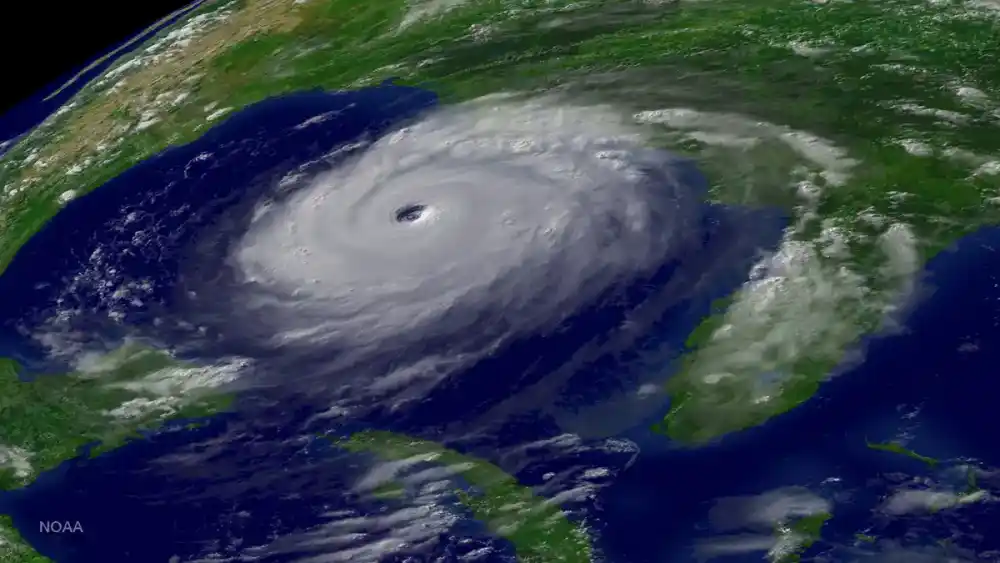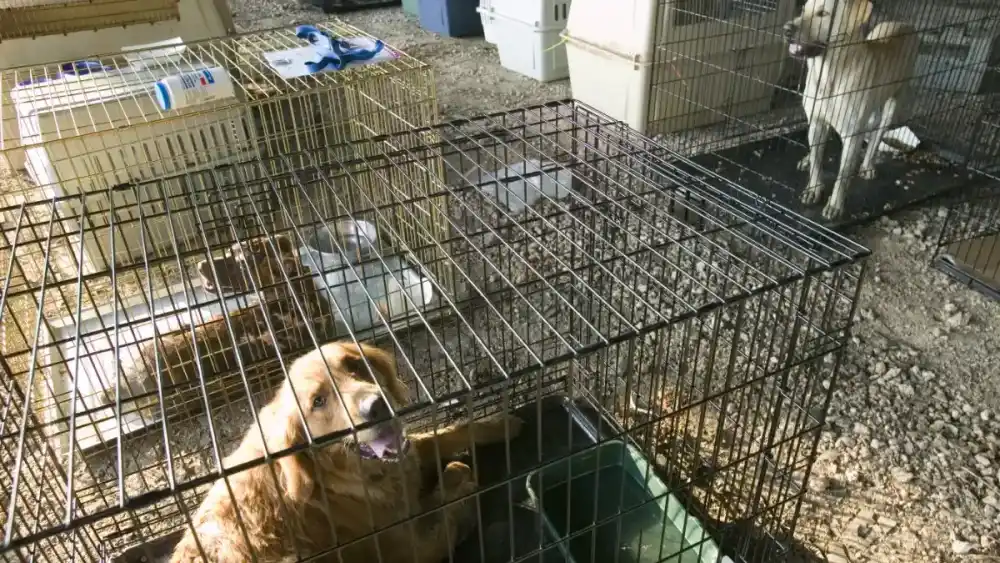Imagine boarding a rescue boat as floodwaters rise, only to be told you can’t bring your dog. Would you leave your pet behind in a storm?
This is the reality that many had to grapple with during hurricane season. On this 20-year anniversary, we are reminded of Hurricane Katrina, which, on August 29, 2005, ripped across the Gulf coast.
The destruction was nothing short of devastating, with the hurricane and floods killing an estimated 1,833 people. Hundreds of thousands of homes were destroyed forcing 1.5 million evacuees across multiple states.
Hurricane Katrina was perhaps the deadliest — and costliest — hurricane in US history with $161 billion in damages. But sometimes the statistics fail to mention the estimated 250,000 dogs and cats that were displaced or died as a result of the storm.

Pets Left Behind: The Consequences
Some people are willing to risk their lives for their pets, and this couldn’t have been more clear during Hurricane Katrina.
Instead of joining the growing number of evacuees, 150,000 to 200,000 people remained during the storm, 44% of whom refused to leave because of their pets.
As it turned out, pets were not top priority during evacuation plans. Rescuers in boats and helicopters often didn’t allow people to bring their pets and evacuation shelters frequently turned them away.
A 2017 study published in the American Journal of Public Health reported that pet abandonment during an evacuation can lead to increased guilt, depression and post traumatic stress disorder.
Many owners also risked returning to evacuation sites prematurely to rescue their animals, and animal welfare workers often put themselves on the line to save stranded pets.

A Shift in Values
After Hurricane Katrina, it became clear that animals could no longer be treated as an afterthought.
This led to the establishment of the Pet Evacuation & Transportation Standards (PETS) Act, requiring disaster plans to account for pets and service animals.
When Hurricane Harvey struck in 2017, Texas saw a more proactive effort to include pets in evacuations than in Katrina’s aftermath. But a 2018 study published in the journal Animals found that, despite progress, many areas still lacked formal pet-inclusive plans.
Organizations such as PAWS Chicago and the ASPCA now mobilize during floods and fires, reuniting pets with their owners.
Pet Owners Need to be Proactive
Experts encourage every pet owner to create emergency kits, microchip their animals, and have evacuation plans on hand — because storms may still present the same heartbreaking dilemma.
When disasters strike, the question resurfaces: would you leave your pets behind? For most, the answer is simple: animals are family, and planning ahead is the best way to keep them safe.
Caitriona Maria is an education writer and owner of The Facts Institute. A teacher for seven years, she has been committed to providing students with the best learning opportunities possible, both domestically and abroad. Dedicated to unlocking students' potential, Caitriona has taught English in several countries and continues to explore new cultures through her travels.